The MI5 Security Service website design was officially re-launched on the 1st of September 2009. - New version of Security Service website
We have also introduced a new Freephone number (0800 111 4645) to make it easier for members of the public to contact us to report suspected threats to national security. This is in addition to our existing Public Telephone Number (0207 930 9000).
N.B. the exisiting telephone number should "officially" be written as 020 7930 9000.
If, as stated in the they really are trying to recruit agents and informants from overseas , as well as from within the UK, then the international dialing code prefix would also help: +44 (0)20 +44 020 7930 9000.
Given how little content there is overall on the MI5 website, the "other language" versions could easily have been full translations of the whole English language website, rather than just cut down versions.
More worrying, is the inconsistent, or entirely missing foreign language versions of the SSL encrypted secure web contact form.
The English language secure web form, correctly, goes to an SSL encrypted web page (https://) , and then properly processes the potentially very sensitive personal details or intelligence tip off, with a server side script, again protected via SSL, even if you follow a link from the default unencrypted web pages.
The Arabic version secure web form also does this correctly..
However, the Welsh language web contact form, but it does not, by default, make use of SSL encryption. (It can be made to do so, if you change "http://" to "https://" by hand). We suspect that very little use will be made of this Welsh language form, but Welsh is one of the legally defined official languages of the United Kingdom.
The French, Russian, Urdu, Farsi and Chinese language versions do not bother to offer a link to a translated version. These foreign language pages even hide the navigation links to the original English version of the secure web contact form.
The Chinese language version has a broken web link to what was probably former Home Secretary Jacqui Smith's official ministerial biography on the Home Office website.
The Farsi version of the website has a translated contacts page, which mentions Secure Sockets Layer (spelled out in English) , but does not bother to use it. The postal address also misses out the word "Desk" from "The Enquries Desk. PO Box 3255, London SW1P 1AE "
How relevant or interesting to the rest of the world, are the relatively detailed explanations about UK legislation like UK Regulation of Investigatory Powers Act 2000 etc., which is what much of the translated versions seem to concentrate on ?
Still missing from the English version, let alone the foreign language ones, is an SMS text message short code method of contact (mobile phones are much more common than internet connected computers) ,
There is still no MI5 Security Service published PGP public encryption key or a public email address - why not ?.
The MI5 Security Service MI5 Contacts Us web page is still much better than, that of the MI6 Secret Intelligence Service, or even the Metropolitan Police Service Anti-Terrorism Hotline contact pages (which does at least have an encrypted web form).
Some of the new features such as the MI5 News and Updates RSS syndication feed had already been sneaked in back in July, without any fanfare.
We wonder if this new website design (not very different from the old one) has actually been properly security penetration tested, following the Cross Site Scripting vulnerability demonstrated back in July. - see Which was worse - the MI6 website spelling mistakes or the MI5 website Cross Site Scripting vulnerability ?
The graphical images chosen and, presumably officially approved at the highest level, to represent the MI5 "corporate brand image" or "look and feel" give the impression of a sinsister, Kafkaesque bureaucracy:
 |
 |
 |
 |  |
 |  |  |
 |  |  |
 |
Note how many blurred images, or people with their backs to the camera, or with their faces otherwise obscured etc. there are in this selection of graphics from the website, which seem to depict the organisation and its targets and the general public as "shadow people".

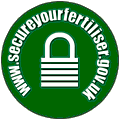









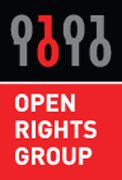







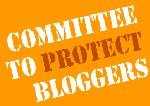
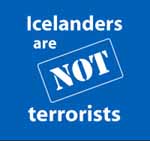



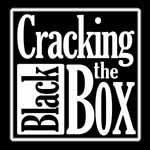

how does it compare with the websites of the equivalent organisations in over countries?
Full details in E.123 : Notation for national and international telephone numbers, e-mail addresses and Web addresses.
br -d
@ David - thanks for the correction.
However, I do not want to obey all of the ITU standards and regulations regarding web addresses and email addresses.
@ botogol - that is an interesting question which needs a bit more research
Have a look for yourself (using Tor) via the links and brief descriptions at:
http://www.fas.org/irp/world/index.html
According to ITU E.123, "If it is desirable to write only the international number, it should be written in the form:
Telephone International +22 607 123 4567"
then the international dialing code prefix should be
+44 20 7930 9000
although I prefer the incorrect
+44 207 930 9000
@Tom Coady
[pedant mode]
I'm afraid you need to read the context for the excerpt you quoted, in particular:
1.7 It is often necessary to draw the attention of subscribers to the need to omit the foreign national trunk prefix when dialling an international call. This need occurs when the destination country conventionally writes its telephone numbers such that the trunk prefix appears with the trunk code (in parentheses). To compose a comprehensible and accurate statement can prove difficult: suitable forms are given in Recommendation E.122, § 3.2.
I.e. what's important is the meaning of the groups of numbers, not how many digits there are.
For the example you give, ITU E.123 mentions before on the same page that the national notation for this number is "(0607) 123 4567"
For 020 7930 9000, the trunk prefix is 020, hence the international notation according to E.123 is +44 20 7930 9000
But as wtwu wrote, one may not want to follow all ITU recommendations in full. In particular, in the UK convention for national numbers is not to bracket anymore the area code - though you do find brackets used in many Ofcom documents. Maybe increased mobile phone usage is responsible for not bracketing geographical area code anymore as when you dial a local number on a mobile phone you do need to include the local area code as well. (4.2 in E.123 includes "The symbol ( ) (parentheses) should be used to indicate that the digits within the ( ) are not always dialled." but these days, area codes tend to always be dialled.)
[/pedant mode]
br -d
Thanks for clearing that up - I think! @David
The optional trunk prefix is specially confusing for me when trying to dial from USA - Is it something like 11 44 to reach UK?
Also of interest is Germany is the only country with variable number lengths I know of, but I guess this is all drifting away from the subject of this amazingly excellent blog, so I'll shut up now.